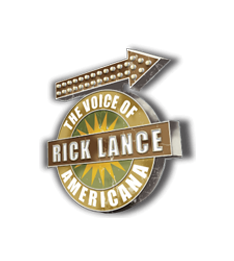Imagine each American accent as a brushstroke on the audio canvas—distinct, textured, and vital. In the world of voiceover, American regional accents voiceover isn’t just about sounding local—it’s about sounding right. Whether you’re narrating a heritage documentary or voicing a commercial with heartland appeal, the power of the right accent can elevate your story from heard to felt.
As a seasoned American voice over artist, you already understand this: nuance is non-negotiable.
Let’s unveil the specifics for you –
Why Do Regional Accents Matter in Voiceover?
In a landscape where authenticity sells faster than perfection, regional voices cut through. An earthy Southern drawl suggests warmth and trust. A flat Midwestern tone evokes reliability. The sharp rhythm of New York? It signals urgency, wit, and street-smart energy.
And the numbers back this up:
According to Voices.com’s 2023 Trends Report, 71% of clients said “accent authenticity” influenced casting decisions for projects with cultural or regional themes.
So, when you’re auditioning for a heritage whiskey brand commercial or a Tennessee-based agritech promo—don’t just deliver the script. Deliver the soil it’s grown in.
But the real question is: How do you master these accents while keeping your voice adaptable and credible?
What Makes the Southern Accent So Relatable?
The Southern accent isn’t just one flavor—it ranges from the slow, melodic Tennessee lilt to the Cajun-tinged tones of Louisiana. In storytelling, this accent brings nostalgia, sincerity, and soul. It’s why it dominates narration for Americana documentaries or farm-to-table commercials.
Quick Tips to Master It:
- Vowel elongation: Think “nah” instead of “no.”
- Dropped ‘g’s: Going becomes “goin’.”
- Focus on pacing—slow down, let it breathe.
It’s not just how you say it—it’s how long it hangs in the air.
Miss this, and you risk sounding cartoonish.
Why Is the Midwest Accent the Industry’s Secret Weapon?
Known as the “neutral” accent, the Midwestern voice is clean, familiar, and digestible nationwide. It’s often what casting agents want when they say: “Give me standard American.” But don’t let “neutral” fool you—it’s highly strategic.
Midwest Accent Wins When You Need:
- Corporate eLearning narration
- Healthcare or insurance promos
- Warm yet professional reads
Pointers To Note:
- Keep vowels flat, especially in words like “bag” or “flag.”
- Stay upbeat—Midwestern speech is friendly but not overly expressive.
Want to book more national brand work? This accent might be your best tool.
The Sharp Precision of the New York Accent – Too Much or Just Right?
From Staten Island grit to Manhattan clipped confidence, the New York accent adds attitude. It’s fast, direct, and often used in retail, sports promos, and financial ads.
But here’s the twist—using it wrong can cost you the gig.
So how do you strike the balance between character and caricature?
Stay tuned…
When Should You NOT Use a Regional Accent?
While accents add authenticity, they aren’t always appropriate. Sometimes, the story needs to speak to everyone, not just a region.
Ask yourself:
- Does the brand target a national or niche audience?
- Is the message emotional or informational?
- Will the accent distract or connect?
This is where versatility becomes more important than variety. And Rick Lance, a leading American voice over artist, makes it a point to match the tone, demographic, and brand voice precisely—never relying on accent alone, but always using it to support the story.
Casting Agents, Are You Listening Closely Enough?
In the casting room, a perfect read can fall flat if the accent feels off by just a hair. That’s why more producers are leaning toward voice actors who study regional nuance like a dialect coach. Are you matching the sonic landscape to the visual story?
If not… your audience will notice.
And here’s the kicker: what sounds authentic to you, might sound staged to your client. Ready to learn how to calibrate that?
We’ll be unpacking that!
Final Thought: Why Regional Voices Will Always Have a Place
In an age of AI-generated voices and overprocessed reads, a well-performed regional accent still wins hearts. It makes scripts feel lived-in, not manufactured.
So when concerned with voice acting services, remember this—dialing into the right accent isn’t just a skill, it’s your advantage. Your voice is your signature. And when it sounds like home, people listen.
Want to refine your regional reads or book talent that truly connects? Let’s talk accents, nuance, and narratives.

